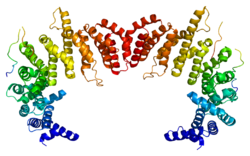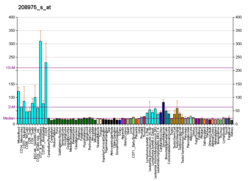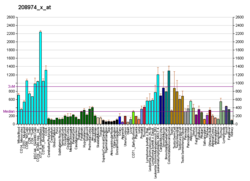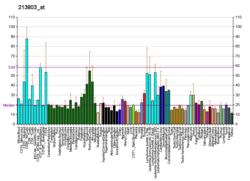Top Qs
Timeline
Chat
Perspective
KPNB1
Protein-coding gene in the species Homo sapiens From Wikipedia, the free encyclopedia
Remove ads
Importin subunit beta-1 is a protein that in humans is encoded by the KPNB1 gene.[5][6]
Remove ads
Function
Nucleocytoplasmic transport, a signal- and energy-dependent process, takes place through nuclear pore complexes embedded in the nuclear envelope. The import of proteins containing a classical nuclear localization signal (NLS) requires the NLS import receptor, a heterodimer of importin alpha and beta subunits. Each of these subunits are part of the karyopherin family of proteins. Importin alpha binds the NLS-containing cargo in the cytoplasm and importin beta docks the complex at the cytoplasmic side of the nuclear pore complex. In the presence of nucleoside triphosphates and the small GTP binding protein Ran, the complex moves into the nuclear pore complex and the importin subunits dissociate. Importin alpha enters the nucleoplasm with its passenger protein and importin beta remains at the pore. Interactions between importin beta and the FG repeats of nucleoporins are essential in translocation through the pore complex. The protein encoded by this gene is a member of the importin beta family.[7]
Remove ads
Interactions
KPNB1 has been shown to interact with:
- KPNA3,[8][9]
- Karyopherin alpha 1,[8][10]
- Karyopherin alpha 2,[8][11][12]
- Mothers against decapentaplegic homolog 3,[13]
- NUP153[14][15][16]
- NUP50,[17]
- NUP98,[18][19]
- Nucleoporin 62,[10][14]
- P53,[20]
- Parathyroid hormone-related protein,[21][22]
- RANBP1,[23][24]
- RANBP2,[14][23][25]
- Ran (biology),[10][24][26] and
- SMN1.[27]
References
Further reading
Wikiwand - on
Seamless Wikipedia browsing. On steroids.
Remove ads








